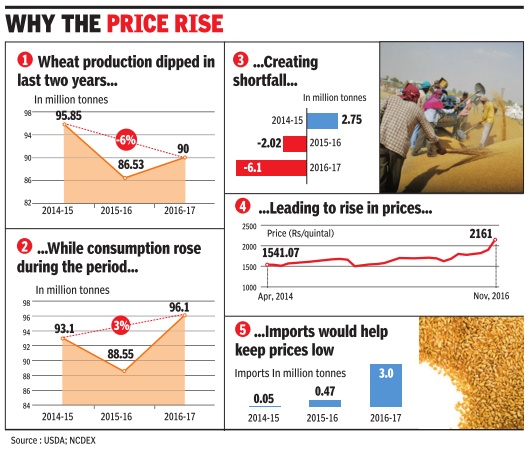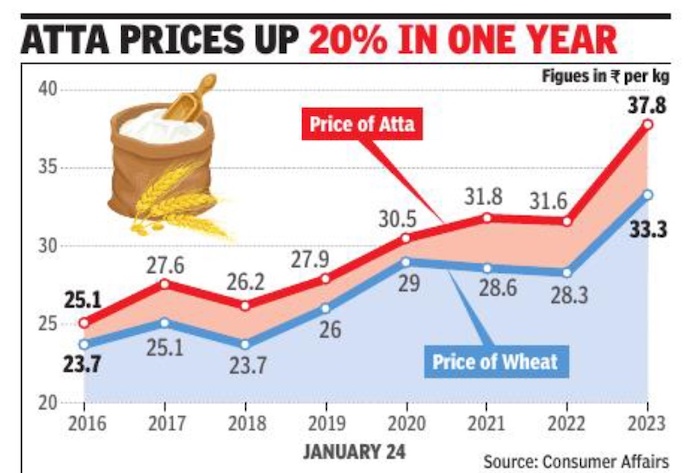Wheat: India (economics)
| Line 8: | Line 8: | ||
| − | |||
| − | |||
| − | |||
| − | |||
| − | |||
| − | |||
| − | |||
| − | |||
| − | |||
| − | |||
| − | |||
| − | |||
| − | |||
| − | |||
| − | |||
| − | |||
| − | |||
| − | |||
| − | |||
| − | |||
| − | |||
| − | |||
=Prices= | =Prices= | ||
| Line 69: | Line 47: | ||
[[MS Swaminathan]] | [[MS Swaminathan]] | ||
| − | [[Category:Economy-Industry-Resources|W WHEAT: INDIA (ECONOMICS)WHEAT: INDIA (ECONOMICS) | + | [[Category:Economy-Industry-Resources|W WHEAT: INDIA (ECONOMICS)WHEAT: INDIA (ECONOMICS)WHEAT: INDIA (ECONOMICS) |
WHEAT: INDIA (ECONOMICS)]] | WHEAT: INDIA (ECONOMICS)]] | ||
| − | [[Category:Flora|W WHEAT: INDIA (ECONOMICS)WHEAT: INDIA (ECONOMICS) | + | [[Category:Flora|W WHEAT: INDIA (ECONOMICS)WHEAT: INDIA (ECONOMICS)WHEAT: INDIA (ECONOMICS) |
WHEAT: INDIA (ECONOMICS)]] | WHEAT: INDIA (ECONOMICS)]] | ||
| − | [[Category:India|W WHEAT: INDIA (ECONOMICS)WHEAT: INDIA (ECONOMICS) | + | [[Category:India|W WHEAT: INDIA (ECONOMICS)WHEAT: INDIA (ECONOMICS)WHEAT: INDIA (ECONOMICS) |
WHEAT: INDIA (ECONOMICS)]] | WHEAT: INDIA (ECONOMICS)]] | ||
| − | [[Category:Pages with broken file links|WHEAT: INDIA (ECONOMICS) | + | [[Category:Pages with broken file links|WHEAT: INDIA (ECONOMICS)WHEAT: INDIA (ECONOMICS) |
WHEAT: INDIA (ECONOMICS)]] | WHEAT: INDIA (ECONOMICS)]] | ||
Revision as of 07:29, 15 November 2023
This is a collection of articles archived for the excellence of their content. |
Contents |
Prices
2014-16: Effect of drought
Nidhi Nath Srinivas, Dec 10, 2016: The Times of India

Wheat Gets Costlier Due To Two Consecutive Drought Yrs
The daily bread may become more ex pensive as spiraling wheat and maida prices take their toll. All India average prices for wheat are up almost 10% between October and November and more than 15% over last November. This has directly affected the cost of sliced bread, bakery products and other processed foods such as snacks, pizzas and noodles. For time-starved families, students, and the urban poor surviving on vada-pao and bread pakora, that is no small thing. India daily consumes 15 million loaves of bread.
The earliest impact of the price rise will likely be felt by metro consumers in Mumbai, Delhi and Kolkata, where bread prices remain around Rs 20loaf, or substantially lower than the economic cost.
Manufacturers say every one rupee rise in the price of maida results in a 30 paise increase in cost of a standard bread loaf. Since maida prices are up from Rs 22kg in April to Rs 25 kg in November, a revision in MRP is inevitable.
Wheat supplies are handto-mouth this year (see chart), thanks to the impact of two consecutive droughts even on an irrigated crop.Wheat stock in government godowns has fallen to a nine-year low of 21.66 million tonnes as on October 1. This is expected to dwindle to 7.8 million tonnes by April 2017, when the new harvest arrives. India uses 7.5 million tonnes wheat every month.
Since the situation is virtually hand-to-mouth, imports are the answer.Luckily for India, the world has ample supply. Ships carrying Ukrainian wheat have started docking at Tuticorin and Mumbai. Imported wheat costs Rs 22kg for millers in Bangalore, a large processing hub. Of the 3 million tonnes expected to reach India by March next, half has arrived.
While Ukrainian wheat will meet the demand for atta, bakers continue to face a shortage. Using Ukrainian red wheat gives a pale grey bread crumb while Indian consumers prefer milky-white bread. Previously bakers used potassium bromate to bleach the bread. But with the recent FSSAI ban on its usage, that option is no longer available. Ukrainian wheat also doesn't have sufficiently strong gluten to make the bread rise properly. Australian and Canadian wheat meets these requirements but is too expensive. Bakers are, therefore, forced to continue buying Indian wheat to blend with imported grain. That has kept domestic prices buoyant.
The government on Thursday scrapped 10% import duty on wheat. This will allow India to re-stock its supply pipeline without inflicting further pain on consumers. Farmers sold off their harvest in July.
Weather is a concern for the 2016-17 crop. Plantings are up marginally in Punjab and down 4% in Haryana, according to latest government data. Largest producer Uttar Pradesh has seen 19% more acreage compared to same time last year, while Madhya Pradesh plantings are up 27%. However, the weather has been dry and warm in October-November. Throughout the wheat growing belt from Punjab and Haryana to UP and MP, the rainfall shortfall ranges from 16% to 91%. The threat from diseases such as yellow rust, wheat blast and karnal bunt also lurks.
The bigger takeaway is the urgent need to raise crop yields in Uttar Pradesh to match international levels, so that prices can withstand weather-related shocks. Most importantly, we need the right wheat for modernizing the wheatbased food industry. The pressures of urban migration, travel, work and changing lifestyles have pushed up demand for maida and rava-based foods and out-of-home consumption.It is time our wheat crop reflected this change.
2016- 2023 January

From: Dipak Dash, January 26, 2023: The Times of India
See graphic:
The price of atta, 2016- 2023 January